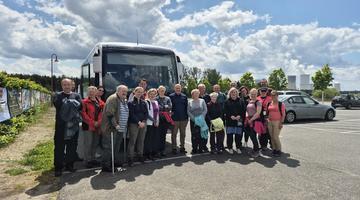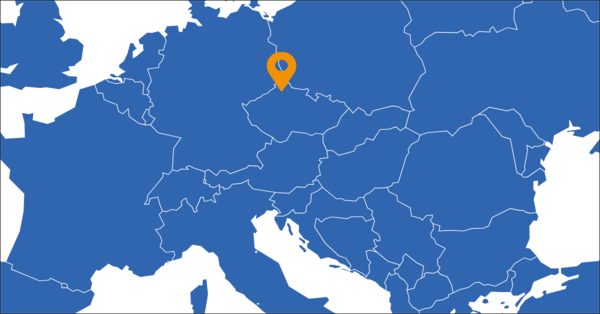
Educational Excursion to Lusatia: Learning from Nature-Based Water Management
At the end of May 2025, as part of LAND4CLIMATE, a two-day educational excursion to Upper and Lower Lusatia (Germany) was organized for 30 participants f...

The area of Bohemian Switzerland is located on the north of the Czech Republic, close to the German border, and it has been a national park since 2000. The National Park aims to preserve the unique combination of rock villages and sandstone formations, as well as the fauna and flora specific to the region. Preserving this unique ecological balance for future generations is of great importance. The National Park is administrated from the close-by town of Krásná Lípa, which is a town with approximately 3,400 inhabitants in the Děčín district in the Ústí nad Labem region.
The region is situated in the "roof of Europe," signifying that no watercourses flow into the region. The area faces challenges with water retention due to permeable sand subsoil and extensive landscape drainage resulting from agricultural and forest management practices. Since 2015, the region has been struggling with drought. During this period, private dwellings have experienced water shortages, prompting the municipality to distribute water in cisterns and impose strict water usage rules. Krásná Lípa also contends with occasional floods, primarily associated with the Křinice River and local ponds. The town of Krásná Lípa hosts various water reservoirs, whose compromised technical condition poses flood risks, especially when filled to capacity. Flash floods, floods caused by heavy rainfall, also occur in the area, damaging infrastructure along the river. July 2022, the area witnessed its largest forest fire, spanning 1,600 hectares in the Bohemian Switzerland National Park. The firefighting effort involved helicopters, aircraft, and 700 personnel over three weeks.
Private land revitalisation for water retention is a critical issue in the area, and the LAND4CLIMATE initiatives are specifically focused on revitalising the floodplain. This involves restoring small water bodies or cascades of ponds. The proposed activities include detailed studies on runoff conditions and obtaining technical input for implementing 1-2 water retention measures, with the goal of creating a water retention basin. The project also aims to provide a comprehensive solution for a 1.5-hectare area with an improperly straightened and deepened watercourse in Krásná Lípa. The objective is to widen the water channel through a nature-centric revitalisation treatment, creating a landscape element within the inner town. Intentionally slowing down the outflow of water is expected to enhance water quality, leading to the creation of new biotopes and increased species diversity. This approach will also play a vital role in improving the city's flood protection capabilities. The introduction of new tree plantings is foreseen to result in natural shading, contributing to improved average temperatures, and these plantings will further increase relative air humidity. Collectively, these outcomes would enhance the overall quality of life of the area’s residents.
Locals can participate by actively engaging in the revitalisation efforts and adding to their knowledge on sustainable practices. The local partners plan to organise seminars, excursions and workshops specifically focused on Nature-Based Solutions and appropriate measures, providing a platform for individuals to deepen their understanding. The partners will also invest in communications to locals about the efforts related to LAND4CLIMATE. Residents can actively participate in implementing measures, either by offering their land in collaboration with the municipality or investors or by directly engaging in activities like planting coppice or addressing land reclamation. This approach ensures the community's involvement in the region's sustainable development.